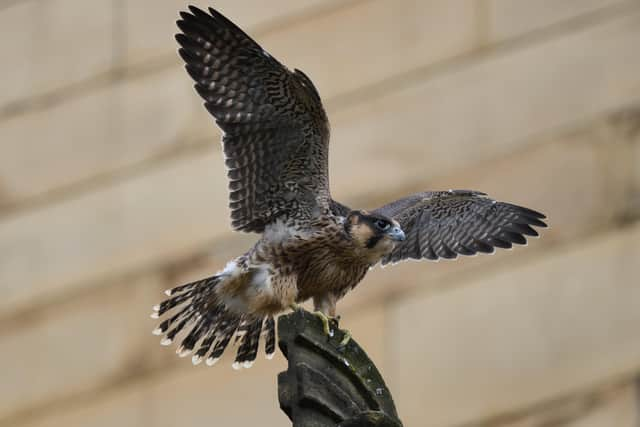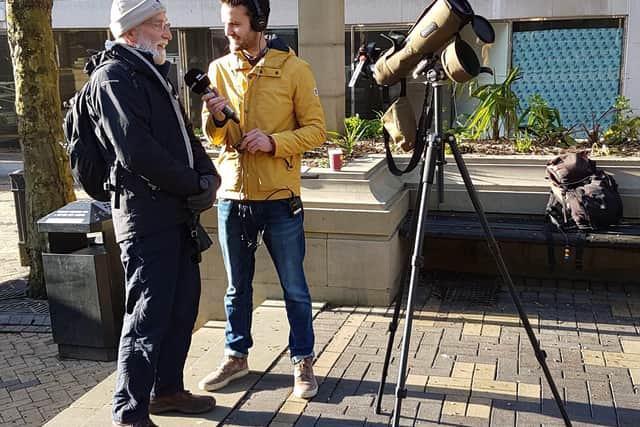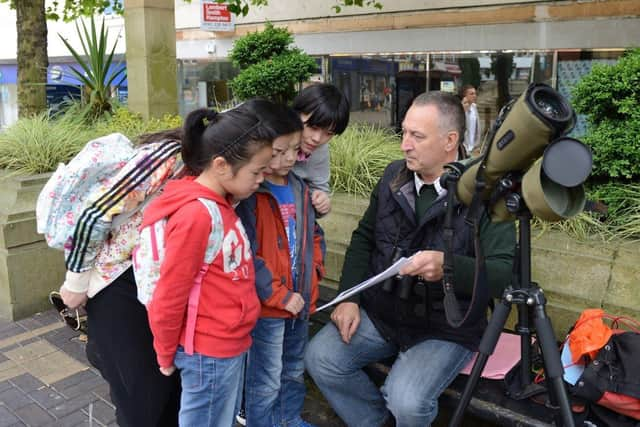Wakefield’s peregrine falcon scheme is set to soar to another level


The urban birding scheme has applied to become a registered charity and will link in with a national project to share information and best practice.
The Wakefield initiative has been going since 2012 when a group from Wakefield Naturalists’ Society (WNS) approached officials at Wakefield Cathedral about putting up a nest box on the spire after a number of sightings there.
Advertisement
Hide AdAdvertisement
Hide AdThe peregrine pair started breeding on the landmark building in 2015 and have fledged nearly 20 chicks while under the watch of WNS.


But now the peregrine scheme is on the verge of becoming a Charitable Incorporated Organisation with three trustees and ten volunteers. Charitable status will also help it receive an income from online donations.
Francis Hickenbottom, the secretary and treasurer of Wakefield Peregrine Project, said: “The project has grown. We are wanting to get involved with things going on further afield with peregrines and other birds of prey. We thought it was the right time to become a separate organisation.”
It will also join forces with the new national Peregrine Network, which is organised by the Hawk and Owl Trust to bring peregrine researchers and enthusiasts together under one umbrella to share expertise and data across Britain.
Advertisement
Hide AdAdvertisement
Hide AdMr Hickenbottom, 58, said: “For instance, I’ve been answering some queries from someone at Dunblane Cathedral who wants to put up a peregrine nest box. One of the things we want are wanting to do as an organisation is to put together an information pack so we can give consistent information to people.”


A key aspect is learning about peregrines’ behaviour and what they eat.
The surroundings of Wakefield Cathedral are checked regularly for discarded prey items. Mr Hickenbottom has been photographing the remains of birds and mammals found by the spire for some time. And some of his images are set to feature in a new book on peregrine prey by broadcaster and naturalist Ed Drewitt.
The rarest item eaten by the Wakefield birds was a Leach’s petrel, a sea-going bird which was blown way off course by gales and into the peregrine’s clutches.
Advertisement
Hide AdAdvertisement
Hide AdMr Hickenbottom had to do a double take when he found the head of the bird in the cathedral’s car park. He said: “Leach’s petrels are true oceanic-going birds. They only come ashore to nest on fairly remote and usually uninhabited islands. You won’t even see them if you go to the coast, normally. It is very unusual to see one and there was one on the floor in the centre of Wakefield.”


He said some people may think its sad that the Wakefield peregrines are taking birds like these. But he thinks it is “wonderful’ news as it shows that the peregrines, which were once decimated by chemicals like DDT, are making a recovery in urban areas.
Mr Hickenbottom added: “Our objective is to tell people not just about peregrines but the way they interact with other species so people can learn more about nature. If young children learn that the fastest animal in the world is living and breeding in the middle of Wakefield then that is good for us.”
But he issued a note of caution as the job of bringing the peregrine back from the brink is only half done.
Advertisement
Hide AdAdvertisement
Hide AdHe added: “In the cities peregrines are doing well but outside the cities, in areas where there is suitable habitat, the peregrines are either absent or not breeding.”
FACT FILE:
Peregrine falcons first nested at Wakefield Cathedral in 2015.
A specially made nest box was erected on the base of the spire at the end of 2013.
The birds ignored it the following year but started breeding there 12 months later. Since then the same pair of birds has successfully fledged 17 youngsters.
Advertisement
Hide AdAdvertisement
Hide AdAlthough the birds can be seen and heard in the city centre, people’s views of them have been enhanced by two web cameras.
One camera focuses on the nest box, while the other concentrates on the base of the spire where the birds often perch.
The birds are not normally active around the nest during winter but they have been unusually busy over the past week or so feeding on species like skylark, redwing and snipe. The pair is expected to take up residence once again from March.
Many people from all around the world watch the birds’ antics via the Wakefield Peregrines YouTube channel. Last year it was viewed 340,000 times. Its videos and live streams were watched for a total of 38,400 hours. The channel was also seen by people in 48 countries and 75 per cent of its viewers were male.
Advertisement
Hide AdAdvertisement
Hide AdThe Wakefield Peregrine Project is also hoping to boost its funds from a ‘charity pot’ at Lush Cosmetics at Trinity Walk, Wakefield over the weekend of January 18 and 19.
See wakefieldperegrines.com for more.